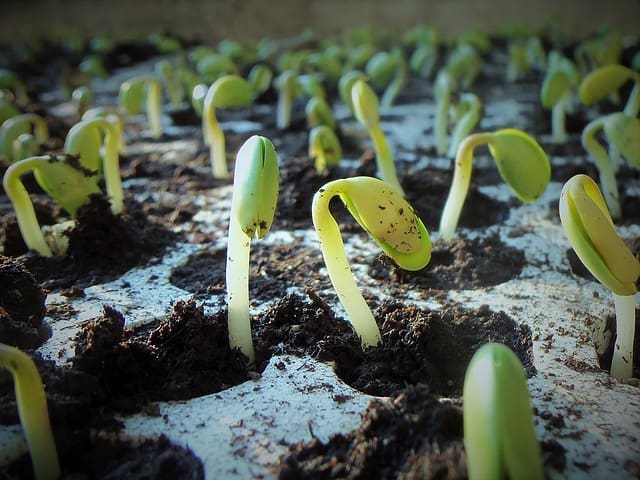Contents
Many people like to burn candles throughout the house. In the living room. Or in the bedroom. Even in the bathroom. But how safe are the candles currently in your home? Did you know that many candles sold in stores are toxic candles and cause damage to our health?
Unfortunately, many candle companies sacrifice quality ingredients for harmful ones to save money. These ingredients, when burned, poison the air we breathe in our homes and cause health issues.
But the good news is that many companies are moving in the right direction and offering healthier alternatives to the toxic candles.
The following guide will go over all the key things to look for when choosing a safer candle to burn in your home.
Keys to Avoiding Toxic Candles
 There are three main parts of the candle. There is the wax, the wick, and the scents. In the following sections, we will cover all the possible options and explain which ones to avoid.
There are three main parts of the candle. There is the wax, the wick, and the scents. In the following sections, we will cover all the possible options and explain which ones to avoid.
Candle Wax
The wax is the most visible part of the candle to check out first. At this point, many people are aware of some of the different types of waxes that are available for candles. But the question I get a lot is, is candle wax toxic? Well, that depends.
The most common type is traditional, or paraffin wax, candles. The second most popular would be soy candles. Then there are some different varieties such as beeswax, coconut wax, and hemp wax.
There are positives and negatives for all the above types, and we will list some below.
Paraffin Wax
 Paraffin wax is the most toxic candle wax. You should avoid this if at all possible. Although it is the cheapest and holds the scent well, it burns off a poisonous residue that disrupts the air quality in your home.
Paraffin wax is the most toxic candle wax. You should avoid this if at all possible. Although it is the cheapest and holds the scent well, it burns off a poisonous residue that disrupts the air quality in your home.
The toxicity exists because paraffin wax is oil based. Manufacturers create the wax from the sludge of crude oil through the process of turning oil into gasoline.
Not only does this cause harm to the environment, but it also can affect your health.
If you have any paraffin wax candles at home, notice how there is a black layer of soot around the top of the candle. The residue also sticks to walls and changes their color slightly.
And you are breathing it in!
This can lead to nausea and vomiting, as well as long-term chronic severe illness like lung cancer.
Avoid this toxic candle wax at all cost! Not only will you improve your health, but you will also help the environment.
Soy Candle Wax
 Next up, is soy candle wax. Soy candle wax is made from soybeans, which means it is vegetable based.
Next up, is soy candle wax. Soy candle wax is made from soybeans, which means it is vegetable based.
Because of this, it burns a lot cleaner than paraffin wax.
Soy is a lot more sustainable than the crude oil of paraffin wax, but there is a hidden problem. Most soy in the world is genetically modified, or GMO, which means that it is resistant to toxic pesticides like Roundup. Spraying these chemicals on the plants eventually makes its way to us.
So when we burn the soy, we are inhaling some of these chemicals that have made its way into the plant, and it could potentially be a toxic candle.
To make sure you are getting the highest quality soy candle wax, make sure that the candle is made from organic soy. Using organic soy eliminates the genetically modified aspect as well as removes the pesticide risk.
Coconut Wax and Hemp Wax Candles
Coconut and hemp wax are great options for safe wax melts. As of now, there is little to no occurrence of genetically modified ingredients associated with these plants. Also, the use of pesticides is low. They are also both very sustainable plants, so there is little adverse effect on the planet.

Even though the above qualities make them excellent candidates, there are drawbacks to be aware of.
First off, they tend to be more expensive.
Secondly, the natural scents of these waxes tend to burn off when using these. Some people enjoy their scents, and others do not. It is just a matter of personal preference.
Finally, because of the previous two reasons, these waxes are often blended with other waxes. Combining them with paraffin wax or GMO soy creates toxic candles.
When buying these candles, look for ones that say “100%” or make sure that they are blended with a quality wax like organic soy or beeswax to ensure a safe wax melt.
Beeswax Candles
Beeswax candles are another great option to use as natural candle wax.
Although I haven’t found any concrete research, some people claim that burning beeswax purifies the air. It does this by creating negative ions which can reduce stress and boost energy levels as well.
I do know that bees are very beneficial to the environment and produce things that have significant health benefits such as honey and bee pollen. So maybe it is true!
The downfall of beeswax candles is that beeswax does not hold scents well. Therefore it will either be sold in natural scent or combined with another wax that carries the aroma a little better. Just be aware of this.
Candle Wicks
Now that we have covered all of the candle wax options and found some all natural wax melts, it is time to turn our attention to the next part of the candle. The wick.
Lead Wicks
 It often comes as a surprise to people that lead wicks exist and cause toxic candles.
It often comes as a surprise to people that lead wicks exist and cause toxic candles.
Although the government banned lead wicks in 2003, some still exist in the marketplace today.
Candles from foreign countries like China potentially have lead cores because they are not regulated. Burning lead wicks can lead to lead poisoning. “Lead poisoning in children is associated with behavioral problems, learning disabilities, hearing problems and growth retardation.”
Often cheaper candles in dollar stores are the ones that potentially contain lead wicks. To find non-toxic candles make sure you examine the cords that you buy from bargain stores.
If you spot a wick with a metallic core, rub it on a piece of paper. If it leaves a mark like a pencil, then it is lead. Do not purchase it!
Cotton and Wood Wicks
When buying candles, you should be on the lookout for cotton and wood wicks. These all natural ingredients are much less harmful than their lead alternatives.
Candle Scents
Finally, we move to the final part of the candle, and that is the candle scent. Many toxic candles contain fragrances made from chemicals. Companies combine formaldehyde and other terrible substances to make pleasant smells. When burned they can trigger reactions such as asthma.
To choose a non-toxic candle, look for ones that are scented with essential oils. Essential oils are naturally occurring plant oils that have been extracted from the plant safely. Not only do they smell amazing, but they are a safer option as well. And many essential oils have incredible benefits for your health.
Conclusion
Many people are unaware of that danger that toxic candles are doing to their home and their health. By using the above guide to choosing safer alternatives, you will be doing your health and the environment a huge favor. So, in conclusion, when selecting candles, make sure to find ones with all natural wax melts, cotton or wood wicks, and ones that are naturally scented.
Purchasing all natural candles will help to ensure better air quality within your home by burning non-toxic candles. Then you can set the mood, relax, and enjoy the night knowing that you are doing it healthily.
